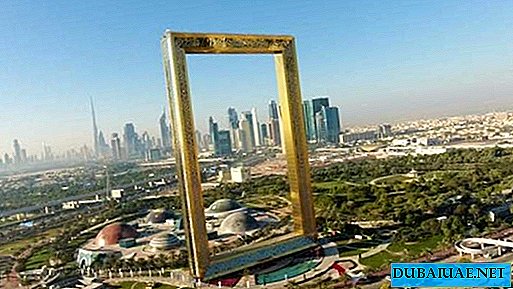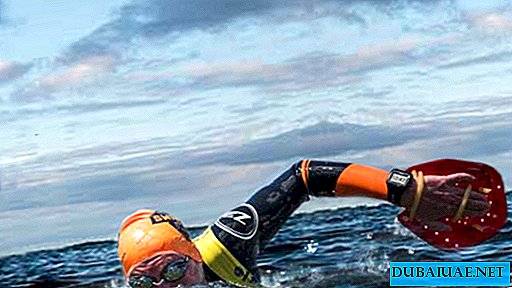 Text: Dmitry Konstantinov
Text: Dmitry Konstantinov
DAMA COMMANDOR OF THE BRITISH EMPIRE OF ZAHA HADID - THE FIRST WOMAN IN HISTORY, CONQUERING THE TOP OF THE WORLD ARCHITECTURE AND THE VALLEY OF INDUSTRIAL DESIGN. A causal link between the ideals THIS BIRTHDAY IN IRAQ British mothers and the fact that it did itself, convincing ALL SAY THAT A NEW WORD IN ARCHITECTURE XXI CENTURY DESTINED TO SAY fairer sex - there are far more complex and creative unpredictability.
Baghdad, where Zaha Mohammad Hadid was born on October 31, 1950, was the capital of an enlightened country, which for 20 years had not yet managed to shake off the gloss of the British protectorate. The father of the family was educated in London, and at home he was one of the leaders of the liberal democratic party. Mohammad Hadid raised his children in the traditions of multiculturalism, without limiting the choice of profession. After going through the options to become a singer, fashion designer and astronaut, 11-year-old Zaha decided to stay on architecture. Traveling with parents to the ruins of the city of ancient Sumerians, as well as magazines with photographs of houses built by Frank Lloyd Wright, did their job. To draw, according to Hadid, her mother taught her.
From avant-garde to deconstructivism
After studying at the Catholic gymnasium in Baghdad and the American University in Beirut at the Department of Mathematics, in 1972 Zaha Hadid moved to London, where he entered AA, a kind of Academy of Architecture under the British Architectural Association. There he is fond of the avant-garde of the beginning of the twentieth century, dreams of hanging the "Black Square" over the mantelpiece, and in 1977 he calls his diploma "Malevich Tectonics". This is a design of the inhabited bridge across the Thames, the heart of which is a 14-story hotel. The work receives a special prize, and a talented girl is invited to Rotterdam, to the OMA studio (Office for Metropolitan Architecture), founded by one of her teachers and the creator of the deconstructivism style by the Dutchman Ray Kulhaas.
When the OMA studio (which, by the way, designed the Garage art center in Moscow) in the early 1980s, from the ideas of large-scale deconstructive urbanism finally changed towards applied postmodernism, Zaha Hadid goes into free swimming. It is possible that the meeting with Peter Rice, who created the designs of the Sydney Opera House and the Pompidou Center in Paris, helped her to decide on this. The venerable Irish engineer reassured the girl that all dreams are feasible, and she opens the Zaha Hadid Architects bureau in London. At the same time, he teaches at AA and Harvard, conducts master classes in European and American art schools, upholding the role of architecture, which is shaping rather than subject to comfort requirements. Partly thanks to such freethinking, it remains a "paper architect" until 1990, until its bureau receives an order to design a firehouse for the Vitra furniture factory in Vejle am Rhein, Germany.
It is symbolic that the furniture company founded in 1950 by Willy and Erica Felbaum set out to reproduce in series all the best practices of constructivists - Kandinsky, Groppius, Wright, Corbusier. From a student bench, Zaha Hadid, who adored this audience, approached the order with a twinkle - and in three years the fire station turned into a reinforced concrete structure resembling the revived composition of the same Kazimir Malevich, well, or the top-secret Stealth strategic bomber.
Frozen Psychedelic
 It would be rash to say that the venerable public accepted the architect’s first project with open arms. Reinforced concrete beams Hadid thoroughly bent and skewed, trying to create the effect of a reverse perspective, characteristic of his deconstructive style. Although there was one plus - they finally started talking about the architect. And in 1997, when Frank Gehry commissioned his Guggenheim Museum in Bilbao and all this became mainstream, customers began to arrive. In 1995, Hadid participated in a project competition for the construction of an opera house in Cardiff and won the first round (268 participants). In the second round, she has 10 competitors, including former partner Ray Kulhaas.
It would be rash to say that the venerable public accepted the architect’s first project with open arms. Reinforced concrete beams Hadid thoroughly bent and skewed, trying to create the effect of a reverse perspective, characteristic of his deconstructive style. Although there was one plus - they finally started talking about the architect. And in 1997, when Frank Gehry commissioned his Guggenheim Museum in Bilbao and all this became mainstream, customers began to arrive. In 1995, Hadid participated in a project competition for the construction of an opera house in Cardiff and won the first round (268 participants). In the second round, she has 10 competitors, including former partner Ray Kulhaas.
She again comes forward with her project, which Prince Charles, a supporter of new architectural trends, likes. However, 60-year-old Roger Edwards, Lord Cricovell, chairman of the Welsh National Opera's Board of Trustees (for which, in fact, the building is being built), insists on the third round, in which, besides Zaha Hadid, the Norman Foster and Partners architectural bureau appears. Hadid wins again, but the cabinet closes the project, redistributing the released funds for the construction of the Millenium House in London.
Interestingly, at the junction of the millenniums, the style of Zaha Hadid begins to change significantly. The projects of her studio over the years look different, whether it be the Museum of Modern Art in Rome (MAXXI), the ski jump in Innsbruck, the BMW factory in Leipzig or the first American facility - Rosenthal Center in Cincinnati, Ohio. Well aware that the best urban projects in the world look asleep the same, Zaha Hadid decides to find his own unique language. And here she manages to do something that neither Frank Lloyd Wright, nor Le Corbusier, nor Norman Foster could have thought of - to synthesize the evolution of modern architecture.
Freely flowing into one another form and a complex interweaving of elements, reminiscent of either arabesques of cigar smoke, or de ornament, both customers and architectural theorists liked it. Subsequently, a graduate mathematician Hadid will call her open style "para-centrism." The meaning of the new direction is that each molecule, each atom in this world has its various parameters and not taking them into account in the formation of space means only designing cells, where even if it is comfortable for the bodies, then the souls certainly do not.
Heydar Aliyev’s center in Baku, which critics considered “the apotheosis of Soviet architecture, provided the leaders were carried away by art nouveau,” became one of the typical examples of the feather test in paracentricism. But the evil tongue was not afraid of Baghdad’s native - in 2004, Zaha Hadid received the architectural equivalent of the Nobel Prize or the Oscar, the Pritzker Prize, which she was awarded at the St. Petersburg Hermitage Theater for her project of a sports center in London.
In 2005, Zahi Hadid's bureau went beyond urban development and worked on the design of the Z-car hydrogen car. In 2007, the Swiss business aviation operator Comlux ordered Zaha Hadid the interior of the largest business jet company in the park - Airbus 318.
A year later, she collaborates with Lacoste, producing a limited edition of walking leather shoes, high and low. makes snake-like sandals for the Brazilian shoe brand Melissa. Then he begins cooperation with the Italian studio Sawaya & Moroni, creating lamps and upholstered furniture. Around the same time, Hadid was developing an original bottle for the 2009 Austrian Icon Hill limited edition wine bottle. In 2012, the German shipyard Blohm + Voss, loved by the Forbes list, begins to build a fleet of bionic superyachts designed by Zaha Hadid.
“There have been attempts to use architectural principles in shipbuilding,” Dr. Herbert Ali, CEO of Blohm + Voss, admits. “However, only Zaha Hadid and her team really succeeded. They offered a number of fresh and bold solutions, setting a new standard in design yachts. "
My fate is a simple canvas
In 2011, the construction of the Capital Hill Residence designed by Zaha Hadid is nearing completion in Barvikha, Moscow Region. Built on the order of the Chairman of the Board of Directors of Capital Group, Vladislav Doronin, a multi-level mansion with a total area of 2650 m2 is considered the first Hadid experience in designing private villas. But undoubtedly successful. 22-meter twin towers elevate the former Rublevka - the realm of red-brick warehouses - to the level of bold architectural experiments in sunny California.
Among the urban development projects of Zaha Hadid in Russia are the Zhivopisnaya tower (Moscow, 2005) and the renovation project of the capital's Expocenter. In 2014, the architectural bureau tried its hand at a tender for a new bridge in St. Petersburg (the previous one was built in 2008 in Zaragoza, Spain), but another economic crisis prevented it. Today, the only realized Zaha Hadid Architects facility in Russia, apart from Naomi Campbell's cottage, remains the seven-story Dominion Tower business center in Moscow on Sharikopodshipnikovskaya Street. Through interiors in all coordinate axes, for the implementation of which builders actively used fiber-reinforced concrete, tenants who are tired of “cellular” layouts will definitely like it.
This summer, a personal exhibition of Zaha Hadid has opened in the St. Petersburg Hermitage. Her diploma "Malevich Tectonics" on the exhibition poster once again emphasizes that the roots of the architect’s work go deep into Russian land.
Dancing towers
 So promising for the architect as a Gulf country, Zaha Hadid, of course, could not ignore her. Work on her first project in the Emirates began in 1997. It was an 842-meter bridge named after Sheikh Zayed bin Sultan Al Nahyan, connecting the island of Abu Dhabi with the continent. Since 2010, the bridge with the original reference sinusoid, symbolizing the ridge of sand dunes, has been operating, and it seems that even somewhere inside it there is a restaurant.
So promising for the architect as a Gulf country, Zaha Hadid, of course, could not ignore her. Work on her first project in the Emirates began in 1997. It was an 842-meter bridge named after Sheikh Zayed bin Sultan Al Nahyan, connecting the island of Abu Dhabi with the continent. Since 2010, the bridge with the original reference sinusoid, symbolizing the ridge of sand dunes, has been operating, and it seems that even somewhere inside it there is a restaurant.
The next Zaha Hadid Architects project in this emirate was the Performing Arts Center on Saadiyat Island. Here, as part of the national complex Cultural District, by 2018 it is planned to open branches of the main museums and concert venues in the world. The project of the local Louvre was entrusted to Jean Nouvel, the Maritime Museum is created by Tadao Ando, the Guggenheim Museum is Frank Gehry, the National Museum named after Al Nahyan is made by Norman Foster, and the Performing Arts Center is created by Zaha Hadid. The multi-level complex with a total area of 62,770 m2 includes five theater halls, a music hall, an opera stage and all kinds of pedestrian recreation. Huge panoramic windows with sea distance, and the concert "multiplex" itself, one resembling the head of a giant reptile crawling ashore, and the other a futuristic liner departing from this very shore, will undoubtedly set a new standard in the perception of music.
More precisely, it will be a standard once once staged by Luke Besson in the movie "The Fifth Element" - a concert of the Floating Lagoon on the planet "Flooston Paradise". But that was fantastic, and now we are dealing with reality itself.
Zaha Hadid made the first proposal to introduce a fraction of paracentricism into the central development of Dubai in 2006. The Dancing Towers project envisaged the construction of a complex of three 350-meter high-rise buildings, each of which in its own way violated the static position in space familiar to the eye. The developer, Dubai Properties, became interested in the project, at the suggestion of which the Hadid bureau “drew” a flat building of the Dubai Stock Exchange, in terms of a four-leaf clover, to the 60-story towers. In this form, the project was renamed Signature Towers and has every chance of being implemented in the near future. The construction site on the artificial peninsula at the very end of Dubai Creek is precisely the future of Dubai City from Hadid.
In the same area of Business Bay, Omniyat Properties is now completing the Opus Office Tower, probably one of Zaha Hadid's most manifest projects. The cubic 21-story building is torn into two by a mathematically modulated internal explosion. In exchange, the inhabitants and guests of this hotel-office receive beautiful panoramas to all corners of the world, interiors that have never been so close to the dreams and hallucinations of Silver Age poets in history, and the night illumination of the “failure” that changes the appearance of the building and illuminates the apartments from the outside with a special flicker. They say that rooms located in this building of the Melia hotel can be booked from next year.
Perceived ambiguously, but instantly recognizable in her projects - there are 950 of them in 44 countries of the world today - Zaha Hadid today can rightfully claim to create her own architectural style, and the style is more and more in demand every year. At first, in the history of world architecture, many had to create alone, proving to the incredulous observers the fidelity of the direction once found. But, firstly, none of them managed to achieve recognition and implementation of their projects so quickly. And secondly, the architect from Baghdad always had a team of reliable like-minded people behind him. Today it is 400 employees of Zaha Hadid Architects bureau from 55 countries of the world. “Architecture must fight on the spot, otherwise it is useless,” Commander Hadid once said in an interview. “This is an art that requires 24-hour service, and I cannot afford to do otherwise.”










